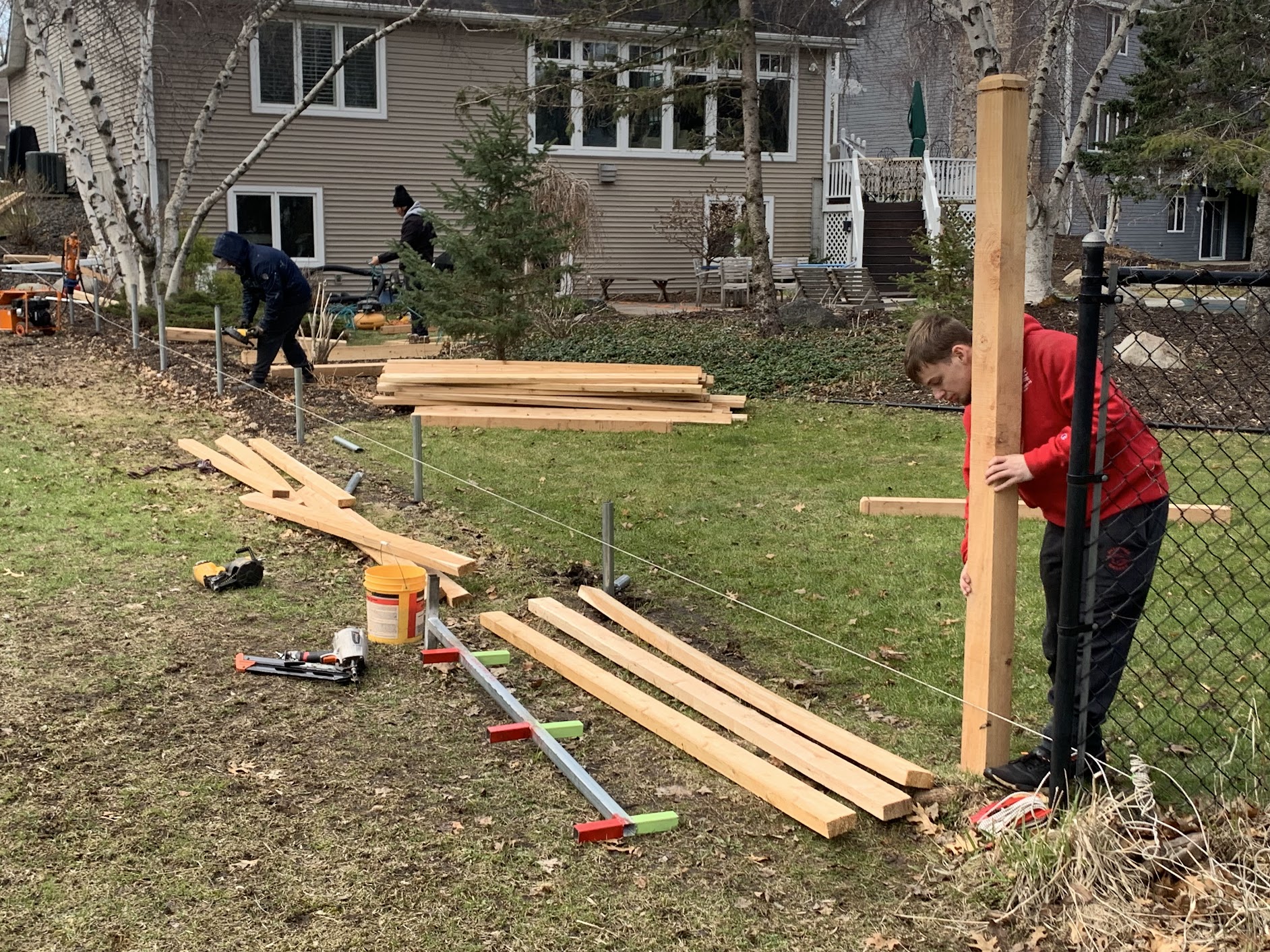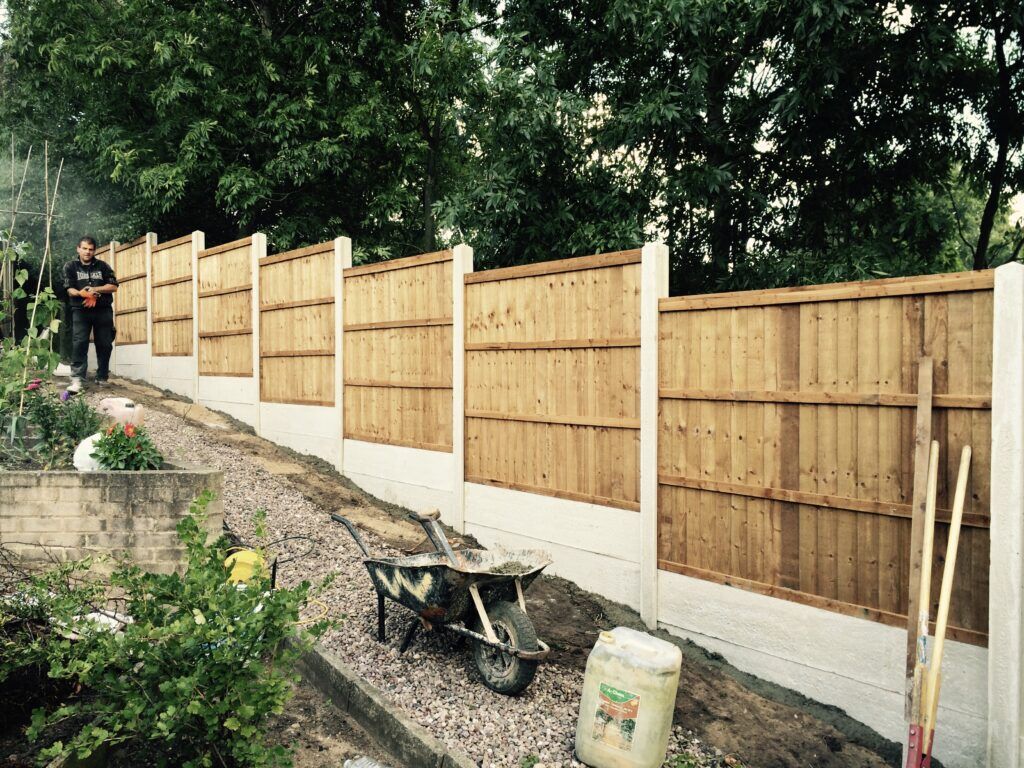Step-by-Step Overview to Installing a Timber Fence for Your Home or Home
Installing a wood fencing can considerably improve both the performance and visual charm of your building. Nonetheless, the process needs careful preparation and execution to attain the desired results. From evaluating your details needs to picking suitable materials, each step plays an important duty in the general success of the job. Comprehending these actions not only makes certain a tough installment however likewise adds to long-term contentment. What follows is a detailed overview that will give quality on how to navigate this process successfully - wood fence installation Fort Smith AR.
Planning Your Fence Setup
When getting started on the installment of a wood fence, cautious preparation is vital to make sure a successful end result. Begin by examining the objective of the fencing-- whether it is for privacy, safety, or appearances-- since this will influence the layout and design. Next off, assess the home lines, making sure to verify the boundaries via a study or title deed to prevent disputes with next-door neighbors.
Consider local zoning laws and homeowners' association guidelines, as these may dictate fencing elevation, layout, and materials. It is suggested to get the essential permits prior to starting work, as this can protect against legal issues in the future.
Furthermore, consider the terrain and dirt problems of your home. Irregular ground may need extra changes during installation, while rough soil might require specialized tools.
Finally, create a comprehensive plan that includes measurements, the variety of blog posts, and the spacing between them. A clear layout will certainly help with the installation procedure and make certain that you have actually all required materials available. By adhering to these planning steps, you can set a solid structure for a successful timber fence installment.
Selecting the Right Products
Selecting the proper materials for your wood fence is vital to ensuring longevity and visual appeal. The most common kinds of timber utilized for fence include cedar, redwood, and pressure-treated yearn. Cedar and redwood are normally immune to degeneration and bugs, making them outstanding selections for long life. Their abundant colors and all-natural grain patterns likewise boost the visual allure of your residential or commercial property.
Pressure-treated want is one more popular choice, as it is commonly a lot more inexpensive. However, it needs regular upkeep and treatment to prolong its life-span. When choosing timber, take into consideration the climate of your region; as an example, locations with high moisture may take advantage of wood types with better resistance to dampness.
Additionally, you ought to evaluate the fence design and objective. A picket fencing might require different material requirements compared to a privacy fencing. Go with thicker boards for architectural integrity, specifically in high-wind areas. Think about the surface; untreated wood might require discoloration or securing to protect against climate elements. By very carefully selecting your products, you can ensure that your wood fencing will stand the examination of time while matching your home's landscape.
Preparing the Installation Site

Preparing the installment website is a vital step in guaranteeing the successful construction of your timber fencing. Appropriate preparation not only promotes a smoother installment procedure yet additionally adds to the long life and security of the fencing.

Following, examine the surface. Remove any kind of challenges such as rocks, roots, or particles that can impede the installation procedure. Take into consideration leveling it or adjusting your fencing design as necessary if your site has unequal ground. Additionally, look for underground energies by contacting your neighborhood energy company. This is important to stop damages her comment is here during installation and guarantee security.
Mounting the Fence Blog Posts

Following, dig openings for every blog post, guaranteeing they are deep enough-- normally one-third the height of the post over ground-- to offer stability. A deepness of at the very least 2 feet is advisable for the majority of fences. The diameter of the openings ought to be roughly three times the width of the articles.
When your holes prepare, place each article upright right into the marked opening. Make use of a degree to ensure they are plumb, changing as needed. After placing, fill up the openings with concrete mix or jam-packed dirt for included assistance. Enable the concrete to heal according to the supplier's directions, usually 24 to 2 days. Effectively mounted messages are important for maintaining the architectural integrity of the fence, ensuring it continues to be safe and secure and upright versus ecological stresses.

Adding Fence Panels and Ending Up Touches
Once the fence posts are securely set, the next step entails attaching the fence panels, which will define the limits of your residential property. Begin by placing each panel in between the blog posts, ensuring they are degree and lined up. Make use of a level device to check that the panels are right; this will make certain a specialist finish. For optimum stability, secure each panel to the blog posts utilizing galvanized screws or nails, which stand up to rust and rust.
After all panels are affixed, check the whole fence for any kind of imbalances or gaps. Make adjustments as required to make certain an uniform look.
In addition, using a safety sealant or stain will enhance the wood's durability against climate components, prolonging the life of your fence. Select a shade that matches your home and landscape for an aesthetically pleasing look. Ultimately, check neighborhood laws for any called for maintenance or updates to guarantee here are the findings compliance with neighborhood requirements. With these actions, your timber fence will not just offer its function efficiently but additionally enhance the overall charm of your property.
Final Thought
In verdict, the successful installation of a wood fencing calls for careful planning, selection of suitable materials, detailed website prep work, and specific execution of installation strategies. Attention to detail throughout each phase makes sure structural stability and visual appeal. By sticking to the described steps, homeowner can improve safety, visual, and privacy allure, ultimately contributing to the general worth and capability of the building. Proper maintenance post-installation additionally expands the life and appearance of the timber fence.
When getting started on the installment of a timber fence, careful planning is essential to guarantee a successful result.Picking the ideal products for your timber fencing is critical to making certain sturdiness and visual allure. A picket fence might call for different material specs contrasted to a privacy fence.With the installment site effectively prepared, the following action involves establishing the fencing blog posts, which serve as the backbone of your timber fencing.As soon as the fence posts are safely set, the following step involves attaching the fencing panels, which will certainly define the borders of your residential or commercial property.